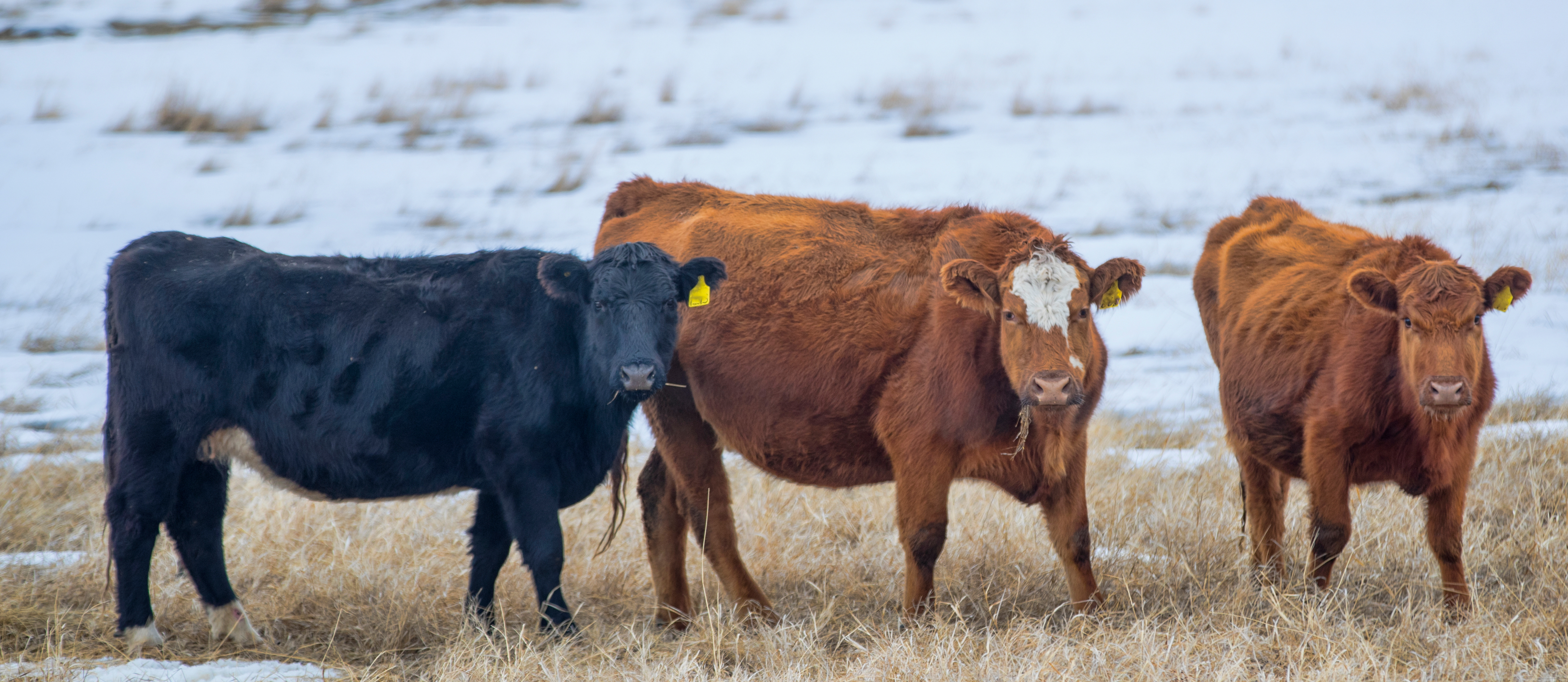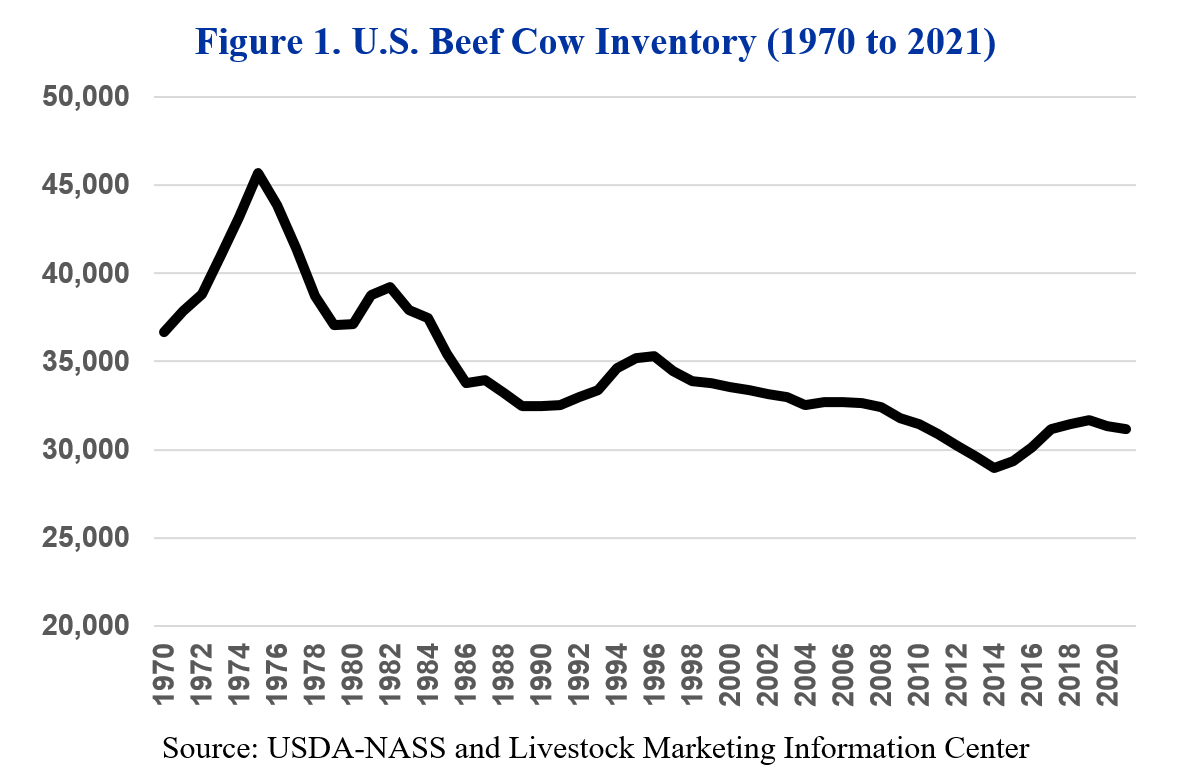Liquidation of the U.S. Beef Herd Continues, but at a Slower Pace than Expected
Liquidation of the U.S. Beef Herd Continues, but at a Slower Pace than Expected

USDA-NASS released their January 1, 2021 cattle inventory estimates on the afternoon of Friday, January 29th. The U.S. beef cow herd was estimated to be down by 0.6%, which was a smaller decrease than most had expected. I had said several times that I expected more than a 1% decrease given weather conditions in much of the country, the challenges seen in 2020, and beef cow slaughter volumes for much of last year. Still, this was the second straight annual decrease in beef cow numbers confirming that liquidation is ongoing. Heifer retention was basically unchanged from last year, which would be an early indicator of another slight contraction in 2021. Figure 1 shows US beef cow inventory going back to 1970. For reference, the 2021 beef cow herd was estimated to be 7.6% larger than the recent low in 2014.

Kentucky beef cow numbers were estimated to be down 4% from last year, which puts our cowherd under one million cows. This is the first time that number has been below one million since 2015 and was actually the lowest January estimate KY has seen since the ’80s. I was surprised by the slight increase in Kentucky beef cow numbers estimated last year, but this year’s decrease does seem more consistent with what I am seeing and hearing. Kentucky remains 8th in state ranking of beef cow numbers and is still the largest cowherd east of the Mississippi River.
At the national level, dairy cow numbers were estimated to up by just over 1%. This was largely expected, but not good news for Kentucky producers that struggled last year. Dairy cow inventory not only impacts milk production, but also beef supply from steers and cull cows. Cull dairy cows actually make up a very significant portion of total cow slaughter. Kentucky dairy cow numbers continued to decrease, down 4% from 2020, and down 39% over the last 10 years.
Admittedly, it’s easy to get wrapped up going line-by-line through a report like this, especially following a year as challenging as 2020. In addition to the frustrating cattle markets, I watched drought conditions worsen in the western half of the U.S. during the second half of the year and was actually surprised that beef cow slaughter was up 2.4% from 2019, despite a smaller cowherd and labor challenges last spring. All of these things pointed to a more significant reduction in beef cow numbers. But, we also have to overlay this with two rounds of CFAP payments and anticipation of a third round of payments. It would be naïve to think that this did not keep some cows on the farm a bit longer.
Stepping back and trying to look at the big picture, the fundamentals set up for an improved year. The size of the U.S. beef herd is shrinking, and the 2021 calf crop will again be smaller. While COVID remains a challenge, there is reason for optimism as we move through the current year. Export pace picked up in the 4th quarter of 2020 and I expect that to continue into 2021. Higher feed prices remain a key challenge going forward, but I still expect a much stronger calf market in 2021, especially in the spring of the year.
The USDA report is summarized in table 1 and the full report can be accessed at: https://downloads.usda.library.cornell.edu/usda-esmis/files/h702q636h/n009ww19g/9880wj45t/catl0121.pdf
Table 1: USDA January 1, 2021 Cattle Inventory Estimates
| 2020 (1,000 hd) | 2021 (1,000 hd) | 2021 as % of 2020 | |
|---|---|---|---|
| All Cattle and Calves | 93,793.3 | 93,594.5 | 100 |
| Cows and Heifers That Have Calved | 40,681.3 | 40,598.0 | 100 |
| Beef Cows | 31,338.7 | 31,157.6 | 99 |
| Milk Cows | 9,342.6 | 9,440.4 | 101 |
| Heifers 500 pounds and Over | 20,024.4 | 20,000.1 | 100 |
| For Beef Cow Replacement | 5,808.9 | 5,812.1 | 100 |
| For Milk Cow Replacement | 4,684.0 | 4,604.5 | 98 |
| Other Heifers | 9,531.5 | 9,583.5 | 101 |
| Steers 500 Pounds and Over | 16,541.2 | 16.597.8 | 100 |
| Bulls 500 Pounds and Over | 2,237.4 | 2,210.5 | 99 |
| Calves Under 500 pounds | 14,309.0 | 14,188.1 | 99 |
| Cattle on feed | 14,657.7 | 14,707.4 | 100 |
|
2019 (1,000 hd) |
2020 (1,000 hd) |
2020 as % of 2019 |
|
| Calf Crop | 35,591.6 | 35,135.5 | 99 |
Source: NASS, USDA
Author(s) Contact Information:
